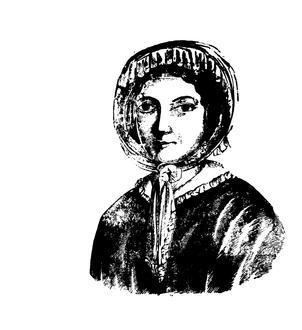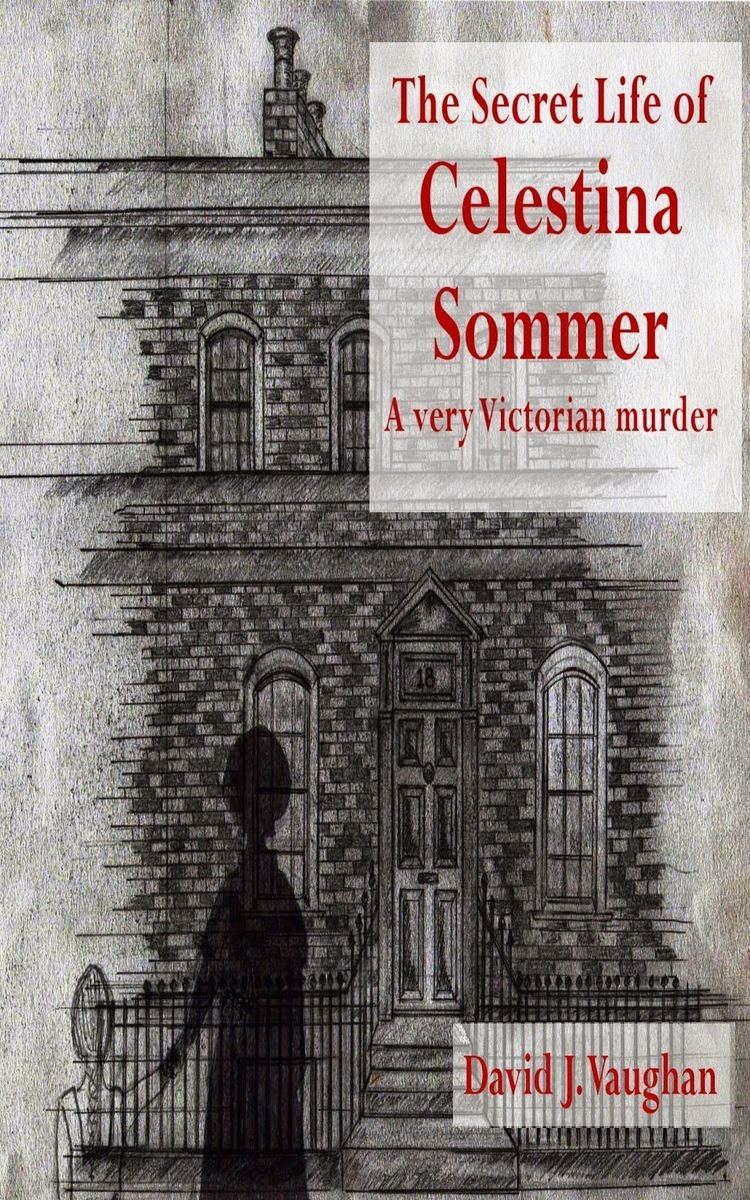Name Celestina Sommer | ||
 | ||
Celestina Sommer (1 July 1827 – 11 April 1859) was a Victorian murderer, notorious as much for her escape from the death penalty as for the murder of her only daughter. Known as the "Islington Murderess", she became an international cause célèbre: examined in the world's press, both houses of the British Parliament, even Queen Victoria's inner circle. Her case, recently rediscovered, reignited the fierce debates on crime and insanity, capital punishment and crime and gender.
Contents
- Early life
- Crime
- Remand hearing
- Coroners inquest
- Trial
- Criminal insanity
- Police evidence
- Her supporters
- Reprieve
- Outcry
- Aftermath
- Death and burial
- Debate
- Infamy
- References

Early life
Born 1 July 1827, she was the fourth of eight children from a respectable family of silversmiths in the north London borough of Islington. An accomplished pianist and teacher of music, she performed regularly at the famed St Martin's Hall, Covent Garden as a member of the greatly respected and hugely popular John Hullah school of music.
In 1845, aged 18, she gave birth to an illegitimate daughter, also called Celestina.
Such were the hardships and social stigmas for unmarried mothers in the Victorian period, the child was immediately handed over to a baby-farmer, with whom she lived until the girl's premature and violent death at the age of just 10. She does, however, appear to have maintained some degree of contact. In 1854, Celestina sr married Charles (Karl) Sommer, a Prussian migrant working in the metalwork and jewellery business, possibly with or even for Celestina's father. The pair were married by licence at St Mary's, Islington Parish Church, Middlesex. From the beginning, they lived in Charles' house, in a nearby area since redeveloped as the Packington Estate (recently redeveloped again).
Crime
On 16 February 1856, after collecting her estranged daughter from her foster parent living at an address in Hackney, Celestina led her back to the marital home where, in the front cellar, she cut her throat. The entire horrific event was witnessed aurally by Rachel Munt, maid-of-all-work, sleeping in the kitchen adjacent to where the crime was being committed. The next day, Munt managed to raise the alarm without alerting her mistress and, at 4.30pm on 17 February, both Celestina and Charles were arrested on suspicion of murder. Inspector Edward Hutton and Sergeant Edwin Townsend removed the pair to Hoxton police station.
Remand hearing
Two hearings in front of the magistrate, William Corrie JP, held at Clerkenwell Police Court, Bagnigge Wells Road (now King's Cross Road) identified the dead girl as Celestina's daughter and deduced (incorrectly) a motive for the killing. Charles was freed after rejecting any idea of his involvement. In fact, he was out of the house on the evening of the murder and had never met his wife's illegitimate child.
Coroner's inquest
The inquest, held to establish the cause of death rather than a guilty party, was held at the North Pole Inn, New-north road, Islington. The jury nevertheless cited Celestina Sommer as complicit in her daughter's demise. What occurred afterwards though was even more striking. As the key witness, Rachel Munt, went home towards Hoxton, she and her sister were chased by an angry mob toward Arlington Street. Townsend and fellow police sergeant George Beckley, managed to whisk them away through a rear door of the Rydon Arms pub (now a private house), only for the crowd to renew their chase, hounding them down beyond Shepherdess Walk. Near the canal bridge, close by the Block Inn [now a private residence], the two policemen were forced to make a stand, as the two frightened girls cowered behind. Two passers-by, seeing the target of the mob's fury, escorted the sisters home, via separate routes, and thus the trouble ended.
Trial
Celestina appeared at the Central Criminal Court (Old Bailey), on two occasions, with the first hearing on 7 March adjourned to allow defence counsel to investigate her mental health...
However, on 10 April, at her second trial, after just fifteen minutes deliberation by the jury, she was found guilty of the wilful murder of her daughter. In the dock, Celestina was described as being pallid and weak, allowed to sit through the hearing and continually requesting the smelling salts from the warder. As the guilty verdict was read out, she was said to slump almost to the floor. Justice Crompton donned the Black Cap before pronouncing the sentence of death.
Criminal insanity
At the time of her crime, the country could not agree on what constituted insanity, nor whether or not it offered exculpation for a criminal act. Celestina Sommer displayed numerous signs of mental ill-health, yet no formal plea was entered by her defence counsel, and her jury were evidently not inclined to be lenient when reaching their verdict. Nevertheless, from the moment of her arrest and throughout all her trials, Celestina Sommer displayed signs that today would arguably be accepted as proof of insanity. For example, she would often ramble about her career as a singer, become passionate about topics completely unrelated to the prevailing discussion, obsess over religious affairs and become dark and withdrawn when placed in social situations.
Police evidence
One factor remains curious - why did the police deny having found the murder weapon a full ten days after the event - only to later claim, at the Old Bailey trial, that they had found it within hours of the arrest? Other evidence, in an era long before DNA-testing, focussed on blood stains found on her clothing, on doorways and walls of the home, a lucifer box and a carving knife - even on the sheets of Rachel Munt's bed, which Celestina had approached immediately after the killing.
Her supporters
Despite the notoriety of both herself and her crime, Sommer did attract support - based largely on her claimed but legally rejected insanity. Many insisted she was of unsound mind, at least at the time of her act. Alfred Dymond, Secretary of the Society for the Abolition of Capital Punishment, was one of the more energetic, writing later about her case in his 1865 treatise on controversial cases, The law on its trial. As part of the response, her solicitor, Charles Octavius Humphreys, forwarded a memorial to the Home Secretary, Sir George Grey. Whatever the tipping point, the politician came to Sommer's rescue. A Prison Matron (), recounting Celestina Sommer the individual, wrote after her death how she had died "a confirmed lunatic".
Reprieve
Sir George Grey attracted severe criticism when he belatedly commuted the death sentence, first to transportation and then penal servitude for life. News of her respite arrived at Newgate Gaol the day of her execution, though the paperwork only arrived the day after. It was, though, his flat refusal to reveal his reasoning which created the greater outcry, as politicians, lawyers, press and the public alike all clamoured for an explanation. In one response to yet more questions in the House of Commons, Earl Granville, Lord President of the Council, confirmed the Minister had recorded his reasons for her commutation in a letter prepared for his successor, as was apparently normal practice. The letter, though, has never come to light.
Outcry
"... a she-devil who deliberates, inveigles her child into her den, and cuts her throat, adding to the horror and barbarity of the act by vociferations of her resolution to perpetrate it in answer to the prayers of her struggling victim, is thought a proper object for the clemency of the Crown by the Home Office" cited in the
The outcry at her apparent escape from justice reverberated around the world. Sommer became the cause célèbre in debates about crime and the death penalty, insanity, and women felons. Parliamentary discourse, select committees, articles and books were joined by popular accusations of nepotism, racial favouritism, royal collusion and gender bias, the latter predicated on her being 'a pretty woman'. The world's press were fervent: elevating her from 'just' another murderess to one who became renowned and despised across the globe.
Aftermath
Sommer spent several years moving through the British penal system, during which time her insanity grew more obvious. Firstly in Newgate Gaol, on death row, during which she shared a cell with two other, contemporary murderers, Elizabeth Ann Harris and Mary Alice Seago. Then at Millbank, the great Panopticon, and finally Brixton Women's Prison, where her physical health deteriorated rapidly, as did her mind. She was eventually transferred to Fisherton House Lunatic Asylum near Salisbury, Wiltshire which, at the time, was the largest criminal lunatic asylum outside the now overcrowded Bethlem. (Broadmoor had been conceived but not yet built.) Yet by then, it was too late for the ailing Islington murderess.
Death and burial
Celestina Sommer died, aged 31, on 11 April 1859. Her post-mortem revealed "hemiplegia (stroke) from congestion of and serous effusion on the brain", plausibly consistent with brain damage and a possible physical cause of insanity. Nevertheless, many maintained that she had wrongly escaped justice, while others suggested there were other, non-physical reasons for her very real madness. On 16 April, she was buried, as so many inmates from Fisherton House then were, in the new municipal cemetery at Fisherton Anger. A stone plaque was erected but today nothing remains to indicate where she was laid to rest.
Debate
Crime and insanity - Celestina Sommer committed her crime in the midst of ferocious debates between the legal and medical professions, the latter centred around the controversial alienists ("psychiatrists who assesses the competence of a defendant in a law court" - OED). At the same time, there remained no absolute definition of insanity, nor of its mitigation for a criminal act, save for the equally controversial M'Naghten Rules formulated in 1843. Many, including her jury, felt the crime had been too planned, too premeditated, for it to be considered a true act of insanity.
The death penalty - though Celestina Sommer's escape from the gallows was contentious, there was a growing dissatisfaction with the death penalty. The last woman to be hanged had been Rebecca Smith in 1849. Organisations such as the Society for the Abolition of Capital Punishment, politicians like William Ewart and various peers, called for the complete revocation of the ultimate sanction. [This was not achieved in Britain until 1965, following the deaths of Peter Anthony Allen and Gwynne Owen Evans for the murder of a former colleague. The last woman to be hanged in Britain, in 1955, was Ruth Ellis.] Even as late as 1864/5, The Royal Commission on Capital Punishment cited Sommer's as a case-in-point.
Crime and gender - Beyond the seditious claims of Sommer's escape being due to her gender and acclaimed good looks, this was the time of increased exoneration for criminal women, especially mothers. Infanticide was seen as different from cold-blooded murder, with puerperal insanity frequently cited as a mitigating force. Ongoing efforts at female emancipation lent a voice to the perceived wider injustices of a patriarchal society and the preordained role of women at home.
Infamy
Literary works - contemporary accounts and comment were rife: including The Lancet, The Economist, Charles Dickens' Household Words and virtually every newspaper around the globe, including The Times in England and The Sydney Herald in Australia.
Modern references - have largely been academic, citing her case as an exemplar study. Smith's Trial by medicine and Showalter's The female malady are examples.
